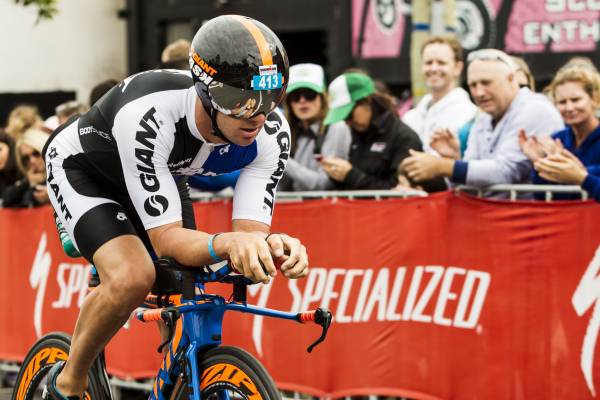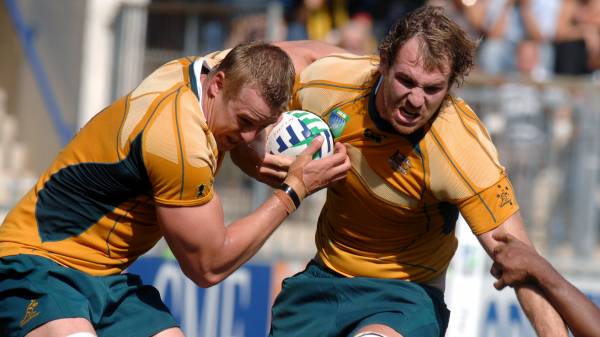What qualities decide whether you are or aren’t an athlete?
I don’t know if our industry reminds us what it means to be an athlete or elite athlete, or whether it matters. If we look to the Greek and Latin languages, we learn you may fit into this definition if you are proficient in sports and/or other forms of physical exercise and/or you compete for a prize.
So, do you deserve the title “athlete”?
Athletes Have Rules
Over at Mike Boyle Strength and Conditioning they have a bunch of rules in their gym about guys not wearing tank tops, girls being allowed to wear tank tops, and nobody being allowed to use lifting gloves and iPods, among others. Over at Read Performance Training there are rules about no shoes, turning up, not complaining, and not quitting.
At most football clubs I’ve worked at, there are team rules plastered on the walls in the locker rooms. The AFL even publishes team rules – not defining what it means to be an AFL player, but what an athlete playing Australian football does in different circumstances to honor the team’s objectives.
“These standards aren’t necessarily based on the number of hours trained or competed, level trained or competed, or goal type. It’s knowing the rules exist, learning them, and then sticking to them.”
At clubs I’ve been involved in, following the team rules made you trustworthy – it was noticed. Some rules drive the athlete to a particular level, like “Be stronger than your excuses.” While others tell the athletes why they train the way they do. Auburn University’s football program has a notice on the exit door of their gym that reminds them “We Just Got Better.”
In commercial gyms, the rules are mostly there for occupational health and safety reasons or for the convenience of others. In private gyms, the rules are there to elevate standards of work, preferably to enhance a culture towards better results.
Athletes Are Prepared
A national-level cycling coach I work with is a great developer of junior athletes on long-term athletic pathways. He runs a session for juniors three mornings per week at 6:00am. His rules for being allowed to attend are that the junior athlete:
- Has had nine hours sleep.
- Has his or her gear ready the night before, which displays the introductory skills of preparedness displaying a mindset that is on-the-job.
- Has no outstanding educational requirements. The percentage of individuals in sport who make it to the podium at national or international level is less than 1%, so the 99% need something to fall back on. That means neglecting educational requirements is a no-no.
- Has the appropriate level of nutrition knowledge. At the level of early teens, just knowing that food labels exist is a great starting point, followed later on by an understanding of food types, and finally by a move toward individually targeting personal nutritional needs.

Athletes Have a Plan
In the German National Football Team, an athlete is given benchmarks that relate to four pillars of performance that EXOS feel are vital to performance. This involves analyzing screens, assessments and test of movements, mindset, and recovery.
“Deficiencies are identified, strategies for correction are devised, procedures are followed, and outputs monitored. Wash, rinse, repeat.”
These concepts are applied in pockets of three. For the upcoming three waking hours the athletes know what the plan is regarding those four pillars. They also know their plan for three hours after that, and so on.
The athletes would also know their three-day plan and their three-month plan. Each plan having the objective to broaden their function in competency, capacity, and skills within the four pillars. Deficiencies are identified, strategies for correction are devised, procedures are followed, and outputs monitored. Wash, rinse, repeat. Rules in action producing outcomes of excellence.
Athletes Have Standards
Having a coach who sets minimums for participants to adhere to appears to be a common thread with great coaches. They are criteria for issuing a license to participate. If not practically, at least culturally.
Common to all these different organisations is that there exists a set of standards based on getting results that serve the individual and the community. Not sticking to them means you’re a trainee – you don’t get to say you’re an athlete in that community. These standards aren’t necessarily based on the number of hours trained or competed, level trained or competed, or goal type. It’s knowing the rules exist, learning them, and then sticking to them.
“Having a coach who sets minimums for participants to adhere to appears to be a common thread with great coaches. They are criteria for issuing a license to participate.”
Breaking the rules is a default – you lose your privileges to be an athlete. Demerit points apply for drunk driving, and they apply for dangerous, careless, and haphazard athletic preparation, too. Whether it’s stated or not, don’t underestimate the judgement that comes by bending and breaking the rules.

My Licensing Criteria for Being an Athlete
- You seek to move well before you move often. You train for quality before quantity, which is reserved for survival and competition. This honors you staying an athlete for a long time. Honoring durability is a characteristic of great athletes. This often has you swim against the stream of those around you going gangbusters despite their quality. On the road from being one of the mob to being a master, this is the first step.
- You have an aspiration to attain qualities you don’t already have, to deliver outputs you’ve not yet displayed. This is because you understand that the goals you aspire to will make of you something greater in value than the goal you get. This aspiration brings emotion to your actions, the necessary ingredient for moving toward your accomplishments. This is the second step in moving away from the masses and towards mastery of your athletic pursuits – aspiring to be better, to be different.
- You recognize you are different from every other athlete. As a result, you work your plan based on individual weak links and strengths. You develop your individual program, not someone else’s.
- You do what you say, when you say will do it. This is a display of discipline to your individual direction. Trustworthiness could be the greatest characteristic you can bring to your coach.
- You reflect on your results to refine your plan. This means having a monitoring process in place. It develops experience more quickly than just being another trainee who turns up, sweats, and goes home. You note whether you slept well and are rested so you can adjust your recovery and nutrition program. You monitor whether you are truly willing to train or whether you need some mindset assistance. You monitor your soreness so you can see whether your training is creating weak links that you need to pay attention to.
Repeating the above process will earn you your license to be called an athlete. Masters of training and sport all follow these steps.
What rules do you have as a coach or an athlete that you think pave the way to success? Post your comments below.
Photo 1 courtesy of CrossFit Empirical.
Photos 2 and 3 courtesy of Shutterstock.






